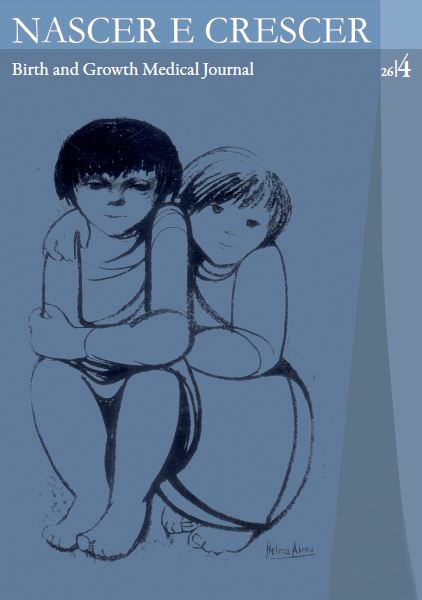Orthopedic case
DOI:
https://doi.org/10.25753/BirthGrowthMJ.v26.i4.12195Keywords:
Bone disease, congenital, lower extremity deformities, tibiaAbstract
A term newborn, from a medically supervised pregnancy, had a hypoplasia of the right leg bones and ipsilateral deviation of the foot on the obstetric ultrasounds and presented at birth with a medial deviation of the inferior third of the right leg and dorsiflexion of the right foot. A right leg x-ray showed a congenital posteromedial bowing of the tibia (CPMBT). A favorable outcome was achieved with a conservative approach at eleven months old.
CPMBT is the most benign of all the congenital deformities of the tibia. Usually it is obvious at birth as a calcaneal valgus deformity. It tends to resolve spontaneously, thus a conservative approach is adopted in most cases. Limb length discrepancy is the main complication, and so follow-up is recommended until skeletal maturity.
Due to the rarity of these deformities, an early recognition and referral are fundamental.
Downloads
References
Dias AIM, Pinheiro L, Almeida E. Deformidade póstero-medial congénita da tíbia: a propósito de 2 casos clínicos. Nascer e Crescer. 2013; 22:171-3.
Kaufman SD, Fagg JA, Jones S, Bell MJ, Saleh M, Fernandes JA. Limb lengthening in congenital posteromedial bow of the tibia. Strat Traum Limb Recon. 2012; 7:147–53.
Ferguson J, Wainwright A. Tibial bowing in children. Orthopaedics And Trauma. 2012; 27:30-41.
McCarthy J. Tibial bowing. Emedicine.medscape.com. Abril, 2015. (Accessed 5 june 2017). Available at: http://emedicine.medscape.com.
Shah H, Rousset M, Canavese F. Congenital pseudarthrosis of the tibia: Management and complications. Indian J Orthop. 2012; 4:616-26.
Shah HH, Doddabasappa SN, Joseph B. Congenital posteromedial bowing of the tibia: a retrospective analysis of growth abnormalities in the leg. J Pediatr Orthop B 2009;18:120-8.
Downloads
Additional Files
Published
How to Cite
Issue
Section
License
Copyright and Authors' Rights
All articles published in Nascer e Crescer - Birth and Growth Medical Journal are Open Access and comply with the requirements of funding agencies or academic institutions. For use by third parties, Nascer e Crescer - Birth and Growth Medical Journal adheres to the terms of the Creative Commons License "Attribution - Non-Commercial Use (CC-BY-NC)".
It is the author's responsibility to obtain permission to reproduce figures, tables, etc. from other publications.
Authors must submit a Conflict of Interest statement and an Authorship Form with the submission of the article. An e-mail will be sent to the corresponding author confirming receipt of the manuscript.
Authors are permitted to make their articles available in repositories at their home institutions, provided that they always indicate where the articles were published and adhere to the terms of the Creative Commons license.


